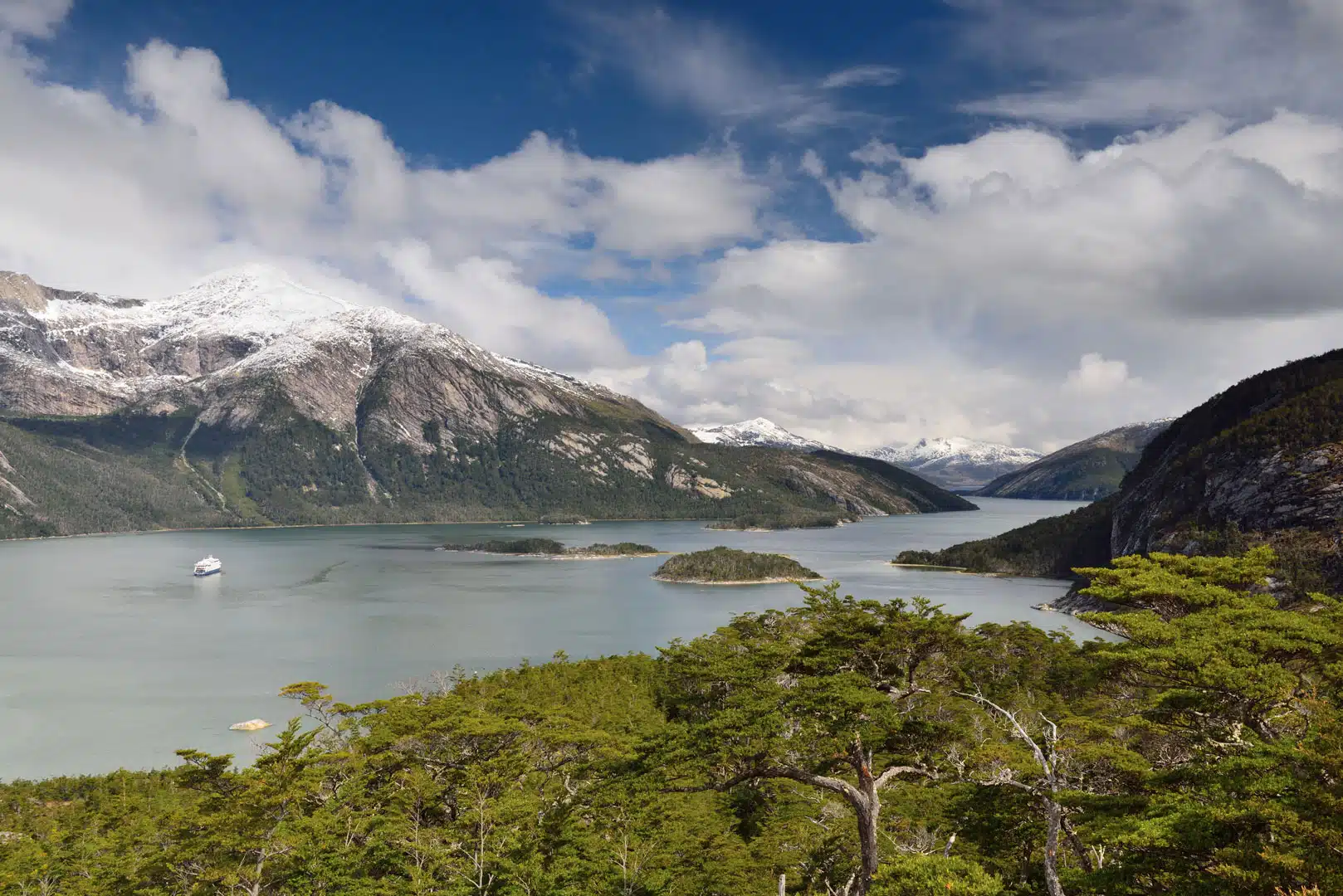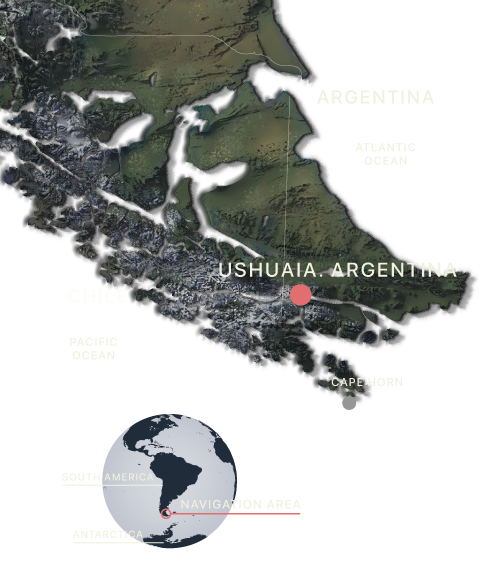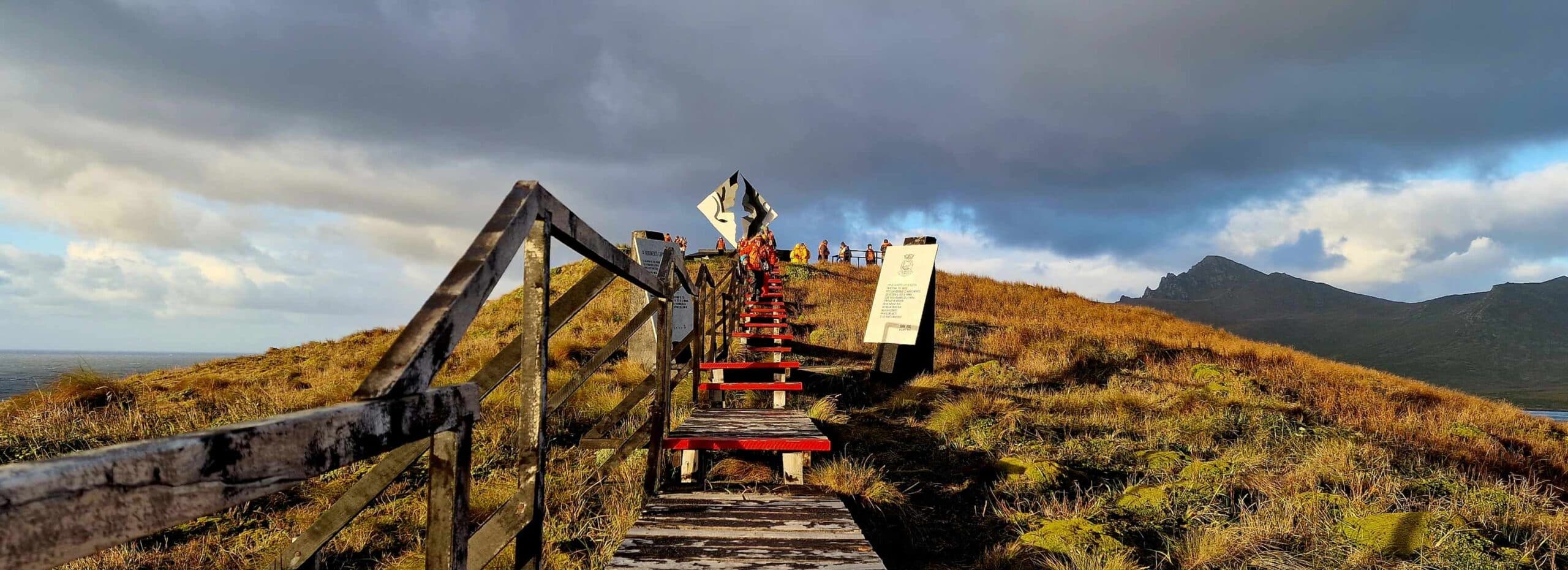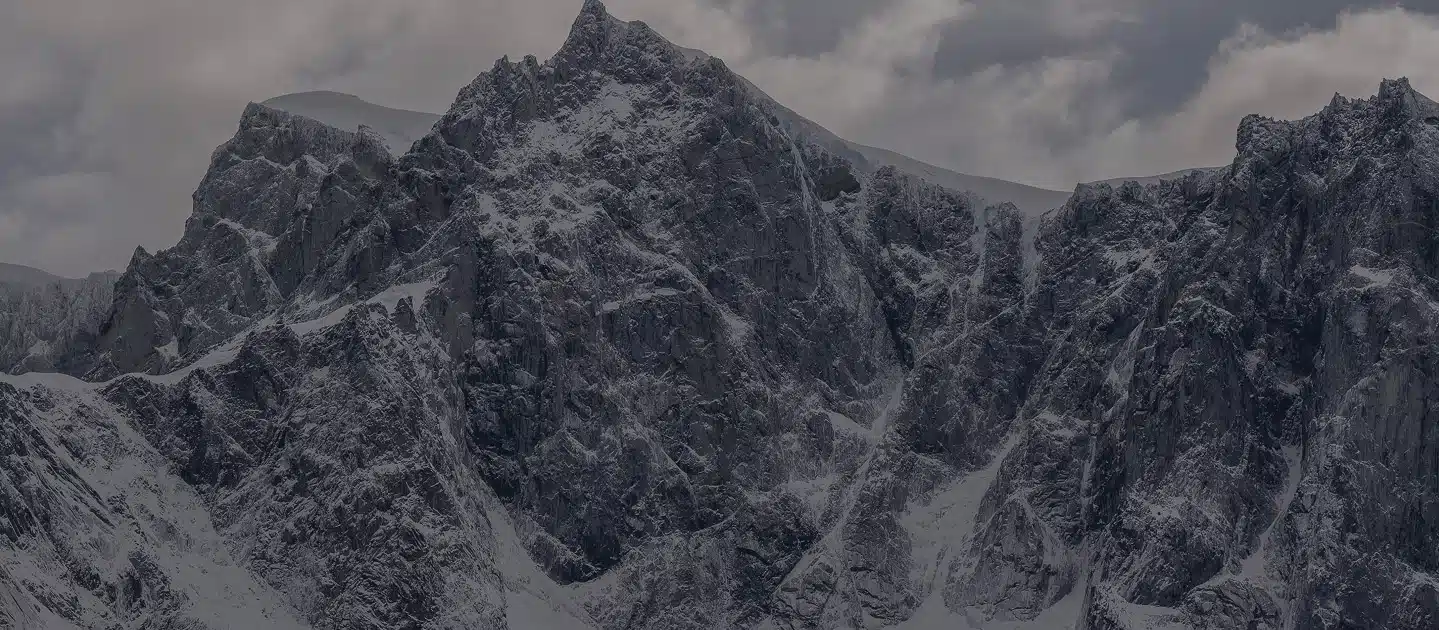Cruise through the Patagonia Region from Punta Arenas:
Punta Arenas By Air
Punta Arenas’ Carlos Ibáñez del Campo International Airport connects the city with major Chilean cities. Flights from Santiago take approximately 3.5 hours, while flights from Puerto Montt take around 2.5 hours. Additionally, flights from Balmaceda are about 1.5 hours. There are also seasonal international flights connecting Punta Arenas with cities in Argentina, such as Río Gallegos.
Punta Arenas By Land
Punta Arenas is accessible via Ruta 9. The drive from Río Gallegos, Argentina’s closest major city, takes about 5-7 hours by car or bus, depending on border crossing times. From Puerto Natales, the nearest Chilean city, the trip takes about 3 hours, making it a central stop for travelers heading further south.




